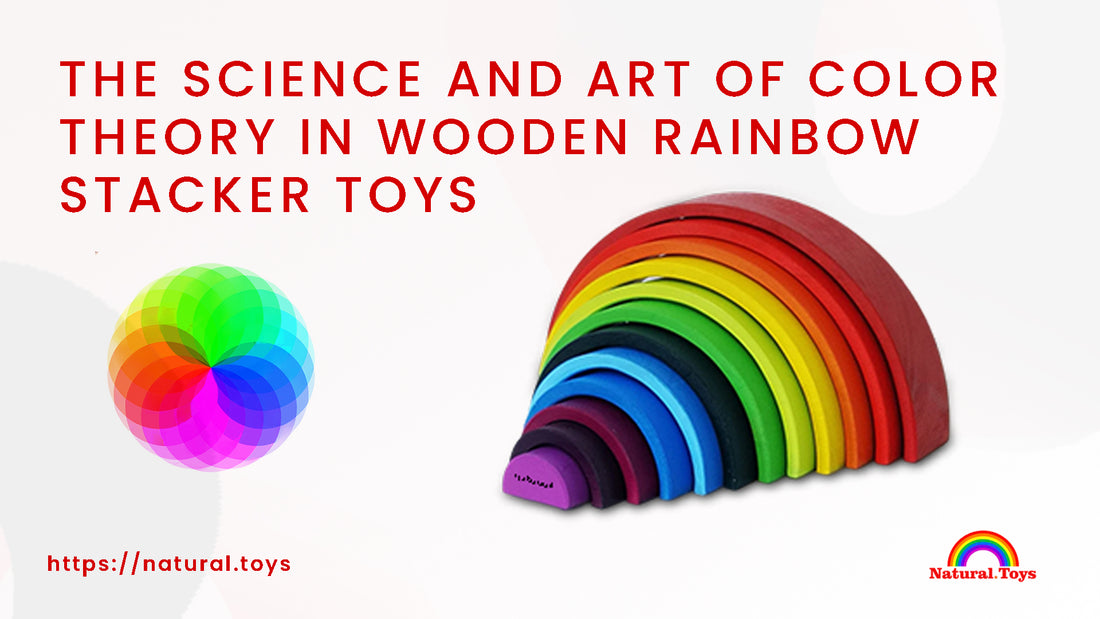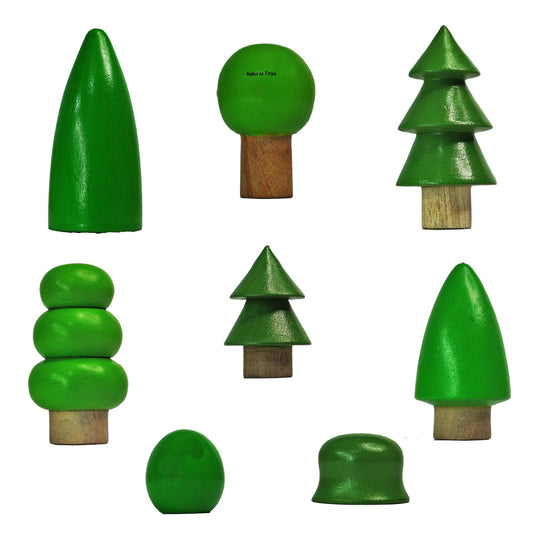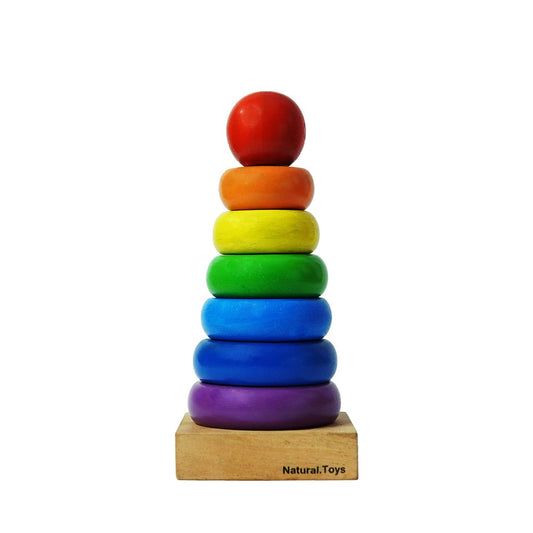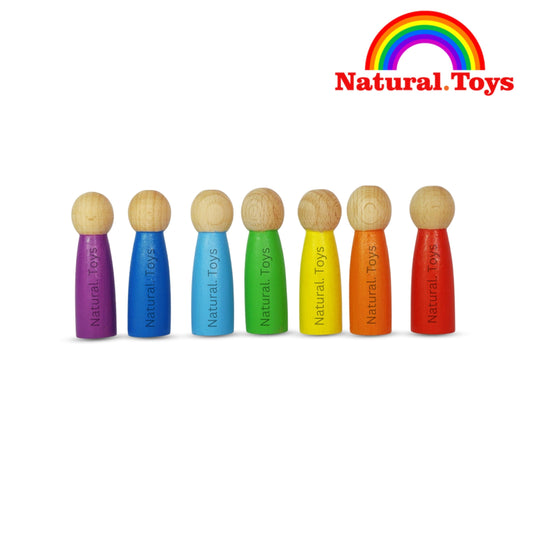
Wooden rainbow stacker toys have become increasingly popular over the past few years, captivating the hearts and imaginations of children and adults alike. These beautiful and colorful toys come in a variety of shapes and sizes, but they all share a common characteristic: they use the principles of color theory to create a visually striking and aesthetically pleasing plaything. In this article, we will explore the science behind color theory and how it applies to wooden rainbow stacker toys.
Color theory is the study of how colors interact with each other and with the human eye. It is based on three primary colors: red, blue, and yellow. These colors cannot be created by mixing any other colors together. Instead, they are used to create secondary colors: orange, green, and purple. These secondary colors are made by mixing two of the primary colors together. Tertiary colors are made by mixing a primary color with a secondary color.
Wooden rainbow stacker toys typically use a range of bright and bold colors, often including all of the primary and secondary colors. These colors are chosen based on the principles of color theory, which dictate how different colors interact with each other.
One important principle of color theory is color harmony. This refers to the way that colors work together to create a pleasing visual effect. There are several different types of color harmony, including complementary, analogous, and triadic.
Complementary colors are colors that are opposite each other on the color wheel. For example, red and green are complementary colors. When placed next to each other, they create a striking contrast that is visually pleasing. Wooden rainbow stacker toys often use complementary colors in their design to create a bold and eye-catching effect.
Analogous colors are colors that are next to each other on the color wheel. For example, blue and green are analogous colors. When used together, they create a harmonious and calming effect. Wooden rainbow stacker toys often use analogous colors in their design to create a more subdued and calming effect.
Triadic colors are three colors that are evenly spaced around the color wheel. For example, red, blue, and yellow are triadic colors. When used together, they create a vibrant and energetic effect. Wooden rainbow stacker toys often use triadic colors in their design to create a playful and lively effect.
Another important principle of color theory is color psychology. This refers to the way that different colors can evoke different emotions and feelings in people. For example, red is often associated with passion and energy, while blue is associated with calmness and serenity.
Wooden rainbow stacker toys often use bright and bold colors that are associated with energy and playfulness. These colors can stimulate the imagination and encourage creative play. At the same time, the use of calming colors such as blue and green can help to create a more soothing and relaxing environment.
In conclusion, the science behind the color theory in wooden rainbow stacker toys is fascinating and complex. By using the principles of color theory, toy makers are able to create visually striking and aesthetically pleasing toys that stimulate the imagination and encourage creative play. Whether you are a child or an adult, a wooden rainbow stacker toy is sure to bring joy and inspiration to your life.





